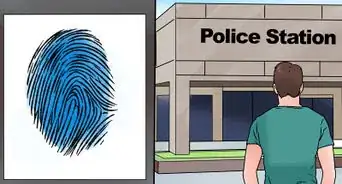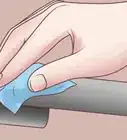wikiHow is a “wiki,” similar to Wikipedia, which means that many of our articles are co-written by multiple authors. To create this article, 58 people, some anonymous, worked to edit and improve it over time.
There are 11 references cited in this article, which can be found at the bottom of the page.
wikiHow marks an article as reader-approved once it receives enough positive feedback. In this case, 91% of readers who voted found the article helpful, earning it our reader-approved status.
This article has been viewed 477,436 times.
Learn more...
Clearing or searching a building when someone may be in it (who also may have a weapon) is a very dangerous task, and should not be taken lightly. Police and military have training for such circumstances, but the normal citizen is usually less than knowledgeable on the subject. Although the authorities should always be contacted in the event of a suspected break-in, knowing how to clear the building yourself may help you to keep yourself and your loved ones safe in the event that help cannot arrive in time. This article, for the purpose of simplification, will assume you are in your house.
Steps
Before You Do Anything
-
1Choose an appropriate firearm. Exploring your house for that unidentified sound in the night or to going to the aid of a loved one with empty hands is not a smart idea. Equipping yourself is therefore important. The three main categories of firearms are pistols (handguns), shotguns, and rifles. The very first step is to intimately familiarize yourself with firearm safety rules. For example, be sure of your target and what's beyond it. Don't shoot your teenage son sneaking back into the house. Also, remember that most likely the bullets you are firing will go through the walls in your house, and could therefore strike loved ones.[1]
- Consider tactically preparing yourself with a pistol for suggestions on arming yourself with a pistols. Pistols are a lightweight, efficient, and popular choice for personal defense.
- An alternative, and highly recommended, firearm to have would be a pump-action shotgun. Shotguns have much better stopping power than a pistol. A pump-action is recommended as reliability is of the utmost importance, but you can also use break-action shotguns to good effect. Don't be fooled by those who say that shotguns are point and shoot. Shotguns take as much training and practice as pistols and rifles.
- Rifles are the third common option. Rifles, again, produce (even in some smaller calibers) significantly more stopping power than most pistols, but they require just as much precision. A magazine-fed, semi-automatic rifle is the suggested choice as two hands may not always be available, and the option to quickly shoot multiple rounds is often a welcome one.
-
2Choose different sizes or gauges depending on effect. For pistols, the largest pistol possible is recommended for the best stopping power and controllability, while for a rifle or shotgun (from now on they will be called "long guns"), the shortest length possible is preferred. These preferences are obviously "within reason", as a 4-foot-long freak-pistol, or a 12-inch-long long gun are impractical and defy the intended use of the specific weapons.[2]Advertisement
-
3Decide your course of action, before you do anything. If you are the only one in the house, or everyone in the house is in the room you are in, then your choices are much easier. If you are sure there is a very-unwelcome guest in your house, call the local police. Lock the door to your bedroom (and any other entrances — if available), and be prepared. Do not move, wait for the police to come. Do not approach the police with a firearm in your hand, be sure to holster it or set it down once the police are in your immediate vicinity.[3]
- The reason why you wait in this situation is because searching a house is very dangerous, and nothing (other than loved ones) should be worth dying over. Plus, insurance should cover any stolen or damaged items.
-
4Know what's in store if you decide to search and clear. This should only be done if you know an intruder is in your house and you have loved ones elsewhere in the house. Be sure you call the police before you take any actions, and be sure to tell them you are armed and that you are going to try to retrieve or protect your loved one(s).
- The other situation in which you might need to use these techniques is if you are unsure about an intruder and you wish to make sure there is no danger. In this case you should also arm yourself with a cell phone, as you may need to call the police while not near a land line.
Clearing Corners
-
1Approach the corner. The most common object in a house is a corner (and the most common solution for an object is the same as clearing a corner). The process of traversing a corner is often referred to as slicing the pie. Start as close to the wall as possible without scraping up against the wall. Make sure that you are at least an arms length away from the corner. You don't want your firearm to stick out into the doorway.[4]
-
2Observe the corner and keep in your mind that the pivot point will be the apex of the corner. The further you step away from the wall, the more open space you'll sight.[5]
-
3Take a small step 90° away from the wall. This is the start of a semi-circle you will make around the corner. Keep your elbows in and your front foot parallel to your line of sight so that neither will give you away.[6]
-
4Pause and scan the slice of the pie. Between each step taken you should scan from the floor at the corner to the ceiling — scanning each slice in a vertical motion.[7]
- Your form will be: a firm, two-handed grip on the firearm. You will be leaning slightly toward the direction you are stepping to allow your head (and your eyes) to be the furthest object, allowing you to see your target before he sees you.
- If you are proficient with both hands, use whichever hand that will keep you most concealed.
- Your feet should never cross, as it is a very unstable position, and if something (or someone) were to hit you, or you are forced to shoot mid-stride, your accuracy and balance will be compromised. Instead, you want to move your lead foot (the foot in the direction which you are stepping), then follow with your trailing foot. Also, be aware of your feet; make sure you are not pointing your toes into the corner as they may precede your eyes, which means the suspect may be able to see you before you see him.
-
5Practice by setting up a mirror in the room. As you are slicing the pie, check to see what you can see in the mirror. Try to adjust your form so that little more than your eye and your firearm are visible.
- You can also practice with another person using flashlights. As soon as one of you sees any part of the other, shine your flashlight on them. The competitive nature of this drill will sharpen your form quickly.
-
6Always point your firearm where your eyes are looking. This will allow you to react more quickly than if you have your firearm at low ready. Arms extended or high-compressed ready are both good options. A high-compressed ready position is achieved by holding the firearm with both hands close to the chest and elbows slightly elevated. With high-compressed ready, make sure that your non-firing hand is behind the plane of the muzzle.
Clearing Doorways
-
1Know the dangers of doorways. The fatal funnel, as it is graciously known, is one of the most dangerous areas to be in when traversing a building. This area includes doorways and other portals which only allow a narrow area in and out of a room (such as narrow hallways and archways). If you were picking a choke point for an ambush, fatal funnels would be perfect places to focus your attention. It is in your best interest to spend as little time as possible in these areas.
- At a doorway, the fatal funnel is the area on either side of the door, as deep as the door is tall and just as wide.[8] So standing to the side of a door does not count (obviously the fatal funnel is an imaginary area — an area which the intruder might not be respecting, so just because you are out of the fatal funnel doesn't mean you can't get shot).
-
2Approach a closed door on the side the handle is on. If you are unable to do so (for architectural reasons), you will have to place your body in the fatal funnel while you open it.[9]
-
3Touch the handle of the door, and "soft-check" the handle to see if the door is locked or not. If this is your house, and you know this specific door does not have a lock, you don't have to perform this step.[10]
-
4Bring your gun to close-contact firing position as you reach for the door handle. When grasping the doorknob, use your non-firing hand and reach below your weapon. This will allow you to bring your weapon to bear without blocking it.
-
5Turn the handle quickly and swing the door open. If you are pushing the door away from you, be sure to swing the door enough so to expose the whole room. If the door stops unusually short of the wall, it may be because something or someone is behind the door.[11]
- If you pull the door toward yourself, the amount of throw is less important as even a small opening will allow you a peek in the room right away, and as you clear the room you can open the door the rest of the way.
-
6Step back from the doorway immediately. This keeps you and your gun away from someone who may be on the other side of the door ready to grab you or your gun. Distance favors the trained shooter. In the event that you are the only one with a gun, distance favors the person with a ranged weapon.[12]
-
7Scan the room the same way you would go around a corner. This time, you have to scan up to 180-degrees instead of only 90. Clear it with the slicing the pie technique. Be sure to start at the wall the door frame is attached to clear as much of the room as possible. You should know all of the hiding places in your house and pay particular attention to them as you're clearing the room.
- When crossing the fatal funnel during the pie slicing, you may want to speed up your pace to spend as little time in the fatal funnel as possible without missing important parts of the room.
-
8Move into the room once you have viewed as much of the room as possible. Start outside of the fatal funnel and move in toward the caddy-corner area. This is a diagonal motion, and it should be done quickly, being sure you don't get hung up on the doorway.
-
9Look over your shoulder as you enter to view the corner you are not heading toward. If someone were hiding in the corner that you weren't able to see during the slicing the pie you will be able to see them now.
- The corner you are walking toward is your first priority. View that corner before you look at the one behind you, as an assailant in the corner in front of you is a higher priority.
-
10Clear the rest of the room for any immediate danger. This may include looking behind furniture and in closets. You do not want to leave an area unsearched; as soon as you leave the room, you assume no one is behind you, when in fact someone may be.
Clearing Self-Closing Doors
-
1Approach the door on the doorknob side (as before). Self-closing doors include spring-loaded or hydraulic-closing doors. Common in most residential houses for the garage access door, this presents a set of problems when being approached from the non-hinge side. If the door opens toward you (you are on the hinge-side of the door), open the door and either use your shoulder or your foot to push it more open as you clear the room.[13]
-
2If you are on the non-hinge side, push open the door open as wide as you can. Depending on the speed at which the door closes, you may have time to move to the opposite side of the doorway before you enter. This is probably your best option.[14]
- If you can, move to the opposite side before you enter. This gives you a brief moment to very quickly scan the room for any obvious potential targets.
- If you are unable to step to the opposite side of the doorway, you must zig-zag into the room.
-
3Enter toward the doorknob side (just as the other doorways and openings) while the door is still mostly open. Entering will take some quick thought and adaptation. You must be quick on your feet; the door may automatically close or close faster than you're prepared for.[15]
- You must quickly commit to entering; this is the only way to retain any element of surprise you may have. The fatal funnel becomes many times more deadly if you allow the door to close before you go through it; now an intruder on the other side of the door knows you must approach that door again to open it.
- Use movement to your advantage. During high stress encounters, you and your adversary will likely have tunnel vision. Simply zig-zagging as you enter the room may cause you to completely "disappear" for a second or two.
-
4View the corner you are walking towards during the small window of time the door is closing. The door will cover the corner to your back temporarily. If you see this corner is clear before the door has almost finished closing, you may have time for a quick scan of the room, but your priority is the corner behind the door.
-
5Turn and view the corner behind you, before the door closes.
-
6Clear the rest of the room as you would any other room. Also be aware that many self-closing doors will slam loudly when they shut. Be patient and maybe spend a minute or more waiting in that room to see if someone comes looking for you.
Clearing Hallways
-
1Understand that hallways present some of the more difficult, dangerous, and dynamic areas of a building. A partner or two in hallways with doors and T-intersections would be very appreciated as, at some point, you will be forced to turn your back on an area you have not yet cleared. You, however, as a private citizen, will likely have to clear it alone. Therefore, you must keep your eyes and ears open and balance multiple danger problems to keep your risk at a minimum. Don't be fooled though, this process, and the other processes in this article, all pose very high risk.
-
2Walk on one side of a hallway or the other. Never make your way down the middle of a hallway. At the same time, keep from touching the walls. Hallways are similar to doorways, meaning that they are a narrow passage that an intruder may be expecting you to come through. The middle of the hallway is your fatal funnel.[16]
-
3Handle obstacles such as doorways the same as mentioned above. Be aware, however, that stopping in a hallway to clear a room means that you have not cleared the rest of the hallway, and an unexplored (uncleared) area is now at your back.[17]
- Corners are no different, but what happens if there are two corners in two directions? This is a T-intersection. See the next section for more detailed information on how to clear a T-intersection.
-
4Keep track of what areas you have cleared and which ones you have not. The areas you have not cleared still contain danger points and you should be splitting some of your attention toward the uncleared areas.
-
5Methodically clear hallways — don't walk past one room to clear another. Doing this means that you now have a room at your back that is uncleared, a hallway in front of you which is uncleared and the room you are intending you enter is also uncleared. This presents an overwhelming amount of danger zones. Placing yourself in this situation is unjustifiably dangerous.[18]
T-Intersections
-
1Know what makes T-intersections especially dangerous. T-intersections are where two hallways intersect and there are two separate corners to clear, neither of which grants better cover than the other. You essentially have double the space to clear, and several blind-spots further down either side of the uncleared hallway.
-
2Start on the right side of the hallway when approaching a T-intersections. The reasons behind this will be explained in detail later. The number one rule here is to not break the plane created by the intersecting hallway. Still, you want to see as much as you can before you commit to entering the hallway.
-
3Keep an eye on the right corner as you make your way toward it. Make sure nothing is an immediate danger.
-
4Clear the left corner as you would any corner, but do not place any part of your body past where the wall ends. Again, crossing the plane created by the intersecting hallway telegraphs your presence to a possible intruder.
-
5Step back and to the left once you've gotten a view of the left corner.
-
6Clear the right corner the same way you did the left corner.
-
7Decide to enter. Now that you have cleared as much as you can without crossing the line, you must break through the plane.
- Enter to the right. The reason the order of the side is important is because you can turn faster toward your support side than your firing side. If someone ends up being in the corner to your left, you can, more quickly, spin to your left than your right. This is all assuming you are right-handed. Everything should be flipped if you are left handed.
-
8Proceed in a fashion similar to a door. Go through diagonally, spotting the corner you are heading toward, and a look over your shoulder to the other corner. View the images to the right for visual representations.
Clearing Stairs
-
1Approach the stairs as if it were a hallway. There will probably be a corner clearing before you get to the stairs. Clear as much of the stair as you can without getting onto them. Stairs create a problem when clearing a building alone, but seeing as a good portion of residential buildings contain stairs, they may need to be traversed at some point.[19]
- The problem with stairs is that in the best situation, they have the same properties as a hallway. In the worst situation, they are a hallway with a T-intersection, and they may have a landing or two with corners and possibly an overlook onto the stairs. All of this means that there are many danger-points simultaneously, only one of which can be covered at any one time. Stairs are dynamic, and some adaptation may be required to match the stair you may be on.
-
2Stay on one side of the stairs, just as in a hallway. If there is a corner or other type of twist in the stairs, you want to be on the opposite side as the corner.[20]
-
3Look above you before you take too many steps (going up stairs). See if there is an overlook onto the stairs. If there is you will want to clear that as you walk up the stairs.[21]
- Keep in mind any corners that are ahead also. Do not neglect these; as said before, there are multiple directions that will need your attention; a partner could easily cover the overlook, while you clear the corner.
-
4Watch any exposed areas that may present themselves. Many stairs with switchbacks expose your legs before you can see around the corner. Move your body to allow yourself the best possible view of areas you are unable to see.[22]
- Some stairs in apartments or other buildings don't have covered rises in the stairs. This is a great way for someone hiding under the stairs to get cover and attack you while you are unable to do anything back.
- The best thing you can do is practice this with a friend using a flashlight.
Engaging Once the Target is Spotted
-
1If you spot your target, you have a couple options. In many states you are in your full right to shoot the person, but this, for most people, is a bit drastic. You should decide ahead of time (even before you own a firearm for personal defense) what your personal morals will allow you to do in this and other situations. Read some information on tactical mindsets if you need help deciding.
-
2Identify yourself. You need to give fair warning before shooting. If you have identified the intruder, and they have already tried to harm you, you may not need to provide additional warning.
- Keep in mind there may be more than one adversary in the house; additionally, being shot is not synonymous with dying, so keep yourself behind cover as much as possible.
-
3Do not jump to conclusions. Chances are you are unsure of who your adversary is or do not know his intentions. (Realize an intruder may mask their intentions — and someone who broke into your house is probably not there to borrow sugar.) Present yourself, by surprise if possible, and order the target with short, firm phrases. Once you have gotten your targets attention with "STOP!" "Hands in the air!" try directing the intruder by saying "Face away from me!" and "Get on your knees!"
- Having him face away from you and keeping him on his knees prevents him from retaliating against you, and keeps him from moving anywhere quickly without a good deal of movement.
- If he has a firearm in his hand, be sure to tell him to drop it! If he does not comply immediately, he is only contemplating the best way to shoot you with it. Re-emphasize the point with "...else I will shoot you!", then take appropriate action. If he decides to slowly set it down, tell him to "STOP!" and "DROP IT!" There have been many police shootings which involved a person slowly setting down a gun, then changing their mind and shooting the police instead. It will take at least 1/8th of a second from the time they start to bring up their firearm until your brain can react. This is plenty of time for them to fire before you know what is going on.
-
4If the person decides to disregard your commands, or makes a sudden move, act decisively. Do the right thing and eliminate the threat. Hesitating will not save your life. You'll only have the luxury of defending your actions if you're physically there to testify. A breach of your property rights must be met with swift action.
- You may want to consider also carrying either pepper spray or a taser for these situations. It will be much easier to defend your decision to spray or taser an intruder who is simply belligerent than it would be to defend shooting a belligerent intruder.
-
5Wait for the police to come. Since you have already called the police, or have a cell phone on you, the police should not be too far behind.
- If for some reason you do not have a cell phone on you, you did not already call the police, and a phone is not within visual range of the intruder, you can have him move while on his knees, be sure he doesn't turn to face you.
-
6Keep a close eye on the intruder on the ground, but be observant. Place yourself in a location of cover and be sure he doesn't have any buddies that may come around a corner. You have announced your presence to the whole house, so another adversary in the house will know exactly where you are, but you can't risk leaving the man you have left alone or out of sight.
-
7Allow multiple adversaries to enter a fatal funnel of sorts. Again, this includes any small area where a miss on one man may be a hit on the other. Multiple targets add a great deal of complexity to a situation, but the truth is that most criminals do not work alone.
- Telling multiple adversaries to "STOP!" is a bad idea. By the time you are able to engage one for not complying, the other could have attacked you. Try to decide ahead of time in your mind what you will do if you encounter multiple adversaries.
Clearing a Building in Reduced Light
-
1Remove light from the equation, if possible, for an advantage. Most situations which would have you creeping around your own house will likely happen at night. It is recommended that you keep the area as dark as possible as you clear your house. Darkness gives you a few advantages: You surely know your house better than an intruder, and if you have a flashlight with you, you have the ability to completely remove the intruder's night vision.[23]
-
2Keep a hand-held flashlight next to your weapon of choice. There is also the option to have an additional attached flashlight. Most tactical, or combat, weapons have the ability to attach certain lights to the frame of the firearm.[24]
- Hand-held light gives you options that the attached light does not, so while an attached light is a great feature to have on a weapon, it cannot always replace the hand-held light.
-
3Consider outfitting your firearm with various sights. Night sights are a welcome feature because they allow you to line up your sights when there is no light. This isn't a panacea, however: If you can't see your sights you may not be able to see your target, and you will have an even more difficult time identifying your target. (Make sure you're not dealing with your next-door-neighbor's son!)[25]
- Laser sights are also options. Laser sights will allow you to see where your firearm is pointed without having to use the sights to aim. This can be very helpful if you don't have your corrective lenses in. As always, you must identify your target as hostile before firing, which means that you will want to have a flashlight, even if you are using a laser.
-
4Allow your eyes to adjust. Your best "accessory" is your own body. If something happens while you are sleeping, your eyes are already adjusted, but if something happens and you are around light (but you must go into a dark area) be sure you let your eyes adjust before you proceed. It can take up to 30 minutes for your eyes to fully adjust.
-
5Be aware of your surroundings. You do not want to be silhouetted against the light behind you, or highlighted by light on you. Try to approach danger areas from the shadows or from behind other areas of concealment or cover.
-
6Identify a possible target and temporarily blind him by flashing your light at their eyes in order to disorient them. Aim the light right at the head and turn it on for only a moment (a flashlight with a temporary-on switch is preferable). You need a flashlight with at least 50 Lumens to temporarily disorient an attacker at night.
-
7Get a good look at the intruder and with a bright enough light, the light-splash should allow you to see if he is holding a weapon. This action will also get a reaction which will give you an idea into the intruder's head. They now know you know where they are, and being blinded is not a comfortable situation. The chemicals in his eyes which allow humans to see in almost complete darkness will have been burnt away and will take up to 30 minutes to fully return, which gives you a big advantage.
-
8Engage the target as described above.
Community Q&A
-
QuestionHow do I avoid revealing my position at night when I turn on my flashlight?
 Community AnswerYou can't, at least not easily. Commandos and SWAT teams preforming Breach and Clear maneuvers will sometimes use red lights instead of standard lights as red light is much dimmer than standard LED bulbs, but also have a much shorter range of effect at only 2 meters or so. Remember that you can use strong lights to your advantage if you know where the other person is, as you can blind them easily. However, except for tactical red lights, use of flashlights in the dark is almost impossible to be done unnoticed.
Community AnswerYou can't, at least not easily. Commandos and SWAT teams preforming Breach and Clear maneuvers will sometimes use red lights instead of standard lights as red light is much dimmer than standard LED bulbs, but also have a much shorter range of effect at only 2 meters or so. Remember that you can use strong lights to your advantage if you know where the other person is, as you can blind them easily. However, except for tactical red lights, use of flashlights in the dark is almost impossible to be done unnoticed. -
QuestionWhat if there was another friendly in the house?
 Community AnswerMake contact with him/her; make sure he/she is safe and knows you are hunting for an intruder with a firearm.
Community AnswerMake contact with him/her; make sure he/she is safe and knows you are hunting for an intruder with a firearm. -
QuestionIs an assault rifle or any other automatic firearm a good choice of a weapon for realizing this task?
 Andrew HawksCommunity AnswerMost people preference a shotgun in this type of situation, and with good reason. However, many ex-military and firearm instructors suggest using a military-type rifle as a better alternative. Each has advantages and disadvantages, depending on the situation.
Andrew HawksCommunity AnswerMost people preference a shotgun in this type of situation, and with good reason. However, many ex-military and firearm instructors suggest using a military-type rifle as a better alternative. Each has advantages and disadvantages, depending on the situation.
Warnings
- Many room clearing techniques you find on the Internet are made for the military or law enforcement who primarily clear buildings with two or more people. These techniques don't always translate to the homeowner clearing his home by himself.⧼thumbs_response⧽
- Be sure to follow all state and local laws (though at times, decisions must be made for the sake of your life and those of loved ones). Note that many laws on firearms change drastically from state to state, and can even change between counties or even cities.⧼thumbs_response⧽
- Make sure you identify your target before firing on them. The police may have already made entry, and you do not want to shoot a cop by mistake. Even if you have not called the police, it's possible that a neighbor saw someone breaking into the house and called, or a police officer just happened to be driving by.⧼thumbs_response⧽
- Be aware that even if you use all techniques above right, there's always a chance you or a loved one could get injured/die.⧼thumbs_response⧽
- Most firearm projectiles will go through residential walls and doors. Do not shoot toward areas where loved ones may be.⧼thumbs_response⧽
- Firearms can be very dangerous and even lethal (else they wouldn't be effective weapons). They should only be used for home or personal defense by experienced firearm users.⧼thumbs_response⧽
- When clearing a corner or doorway, realize that an armed intruder may be able to shoot you through the wall or door. If they do not know where you are, they will not shoot you, but it is best to step back from cover to make randomly fired bullet less likely to hit you.⧼thumbs_response⧽
References
- ↑ https://webpath.med.utah.edu/TUTORIAL/GUNS/GUNANAT.html
- ↑ https://www.usacarry.com/best-handgun-caliber-concealed-carry-weapon/
- ↑ https://www.safety.com/how-to-deal-with-an-intruder-in-your-home/
- ↑ https://spotterup.com/basic-tactics-slicing-pie/
- ↑ https://www.youtube.com/watch?v=-kYtbzapxD0
- ↑ https://www.youtube.com/watch?v=-kYtbzapxD0
- ↑ https://www.youtube.com/watch?v=-kYtbzapxD0
- ↑ http://www.policemag.com/blog/training/story/2010/10/the-scale-of-desirability-and-fatal-funnel.aspx
- ↑ https://www.youtube.com/watch?v=zvJEk2JvpRo
- ↑ https://www.youtube.com/watch?v=zvJEk2JvpRo
- ↑ https://www.youtube.com/watch?v=zvJEk2JvpRo
- ↑ https://www.youtube.com/watch?v=zvJEk2JvpRo
- ↑ https://www.frontsight.com/News.asp?Action=ViewNews&ID=118
- ↑ https://www.frontsight.com/News.asp?Action=ViewNews&ID=118
- ↑ https://www.frontsight.com/News.asp?Action=ViewNews&ID=118
- ↑ https://www.recoilweb.com/an-assaulters-guide-to-hallways-128691.html
- ↑ https://www.recoilweb.com/an-assaulters-guide-to-hallways-128691.html
- ↑ https://www.recoilweb.com/an-assaulters-guide-to-hallways-128691.html
- ↑ https://www.youtube.com/watch?v=weajJ5Cw3x4
- ↑ https://www.youtube.com/watch?v=weajJ5Cw3x4
- ↑ https://www.youtube.com/watch?v=weajJ5Cw3x4
- ↑ https://www.youtube.com/watch?v=weajJ5Cw3x4
- ↑ https://www.gunsandammo.com/editorial/home-invasion/247727
- ↑ https://www.gunsandammo.com/editorial/home-invasion/247727
- ↑ https://www.gunsandammo.com/editorial/home-invasion/247727

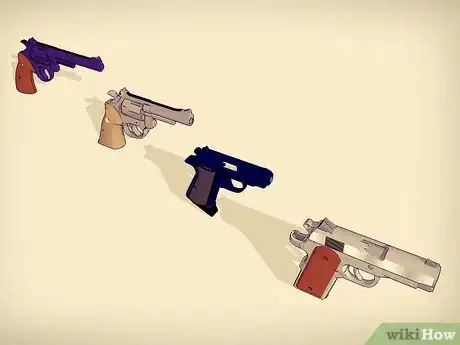
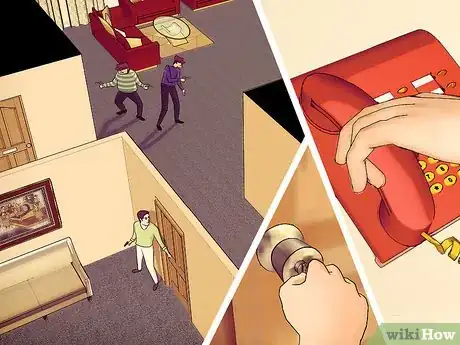


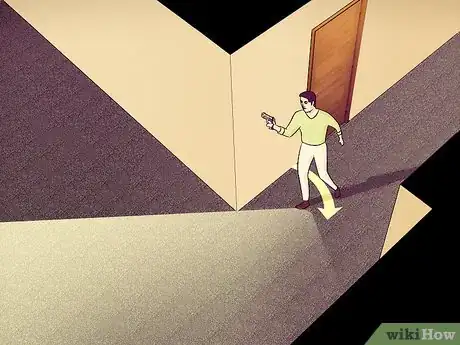

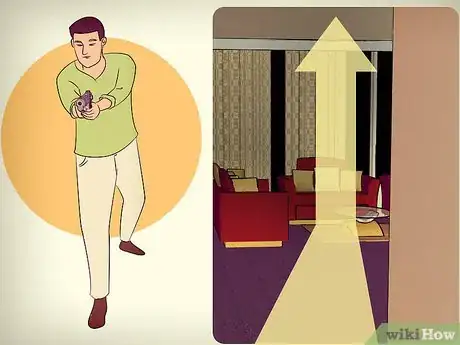



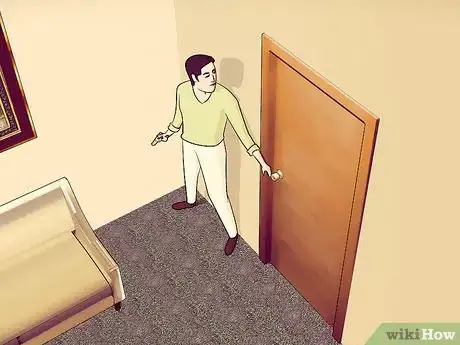
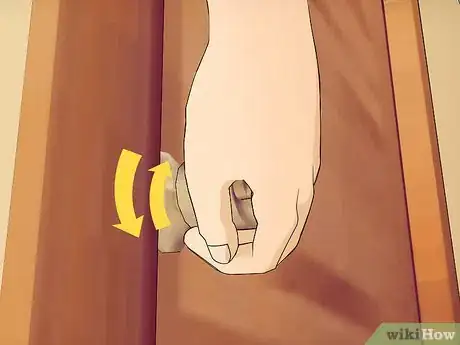


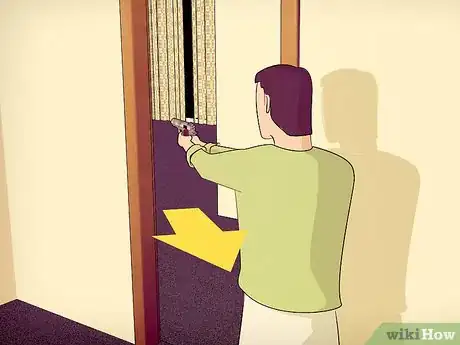

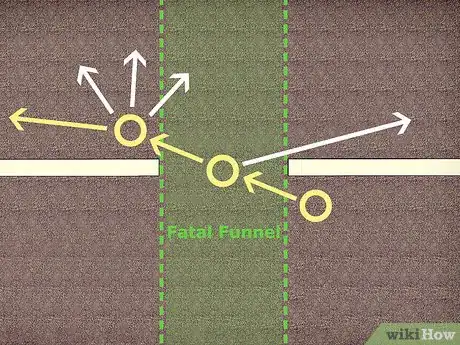

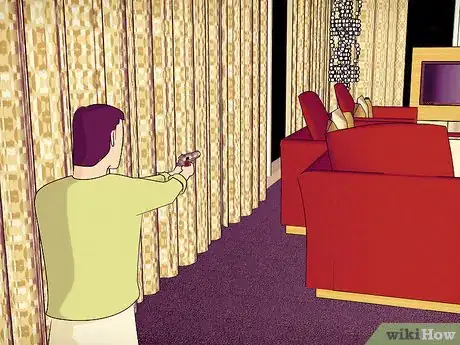
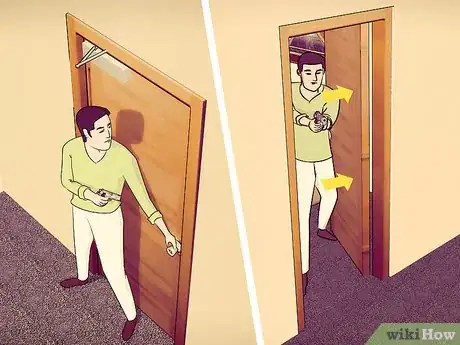

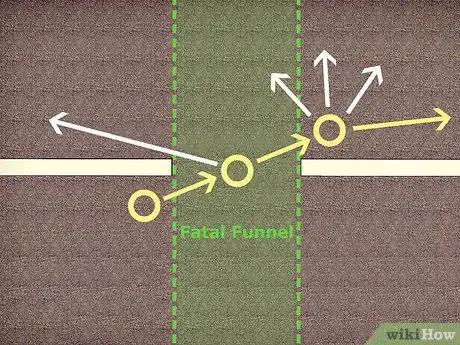

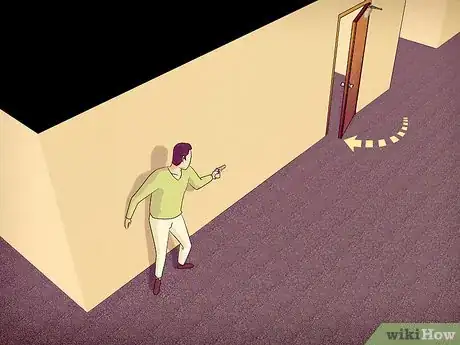



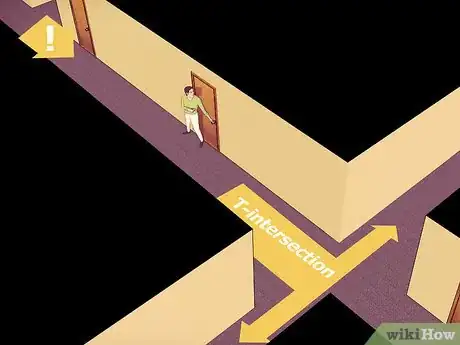
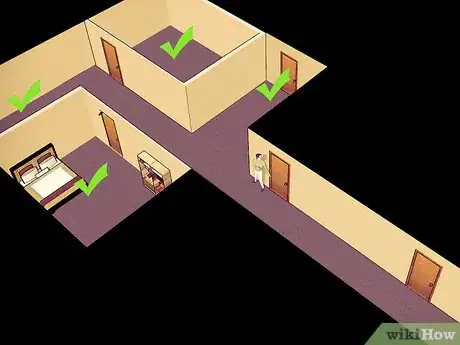
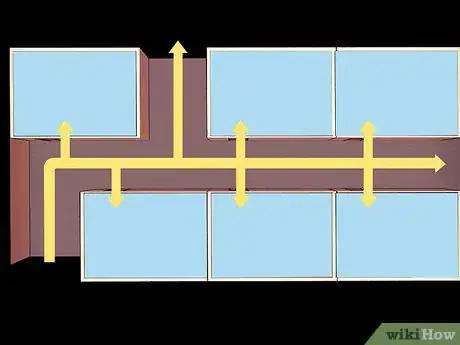



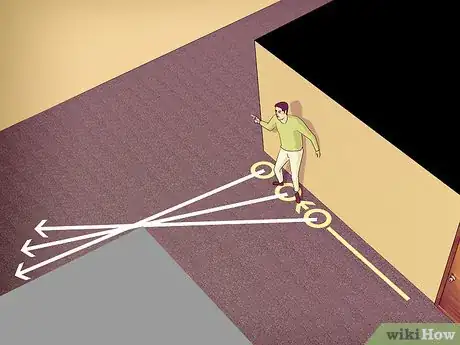


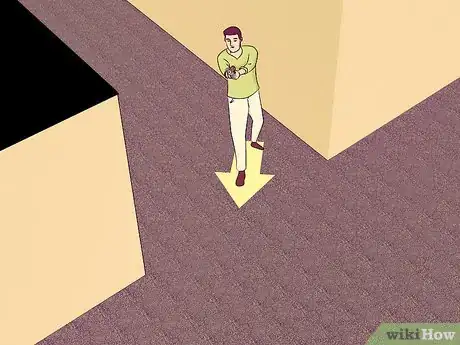

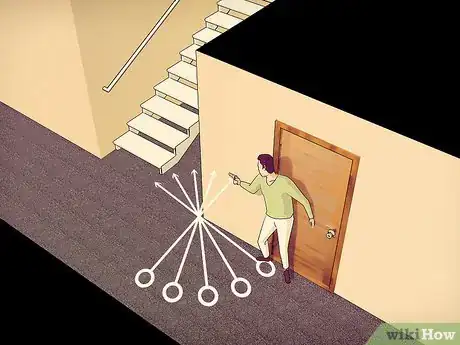
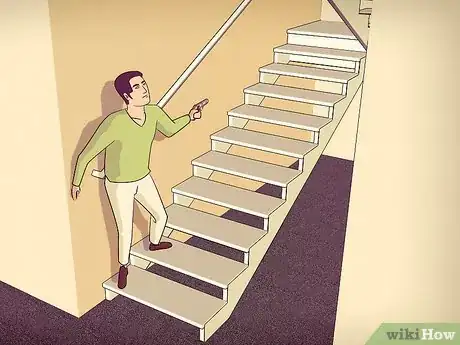

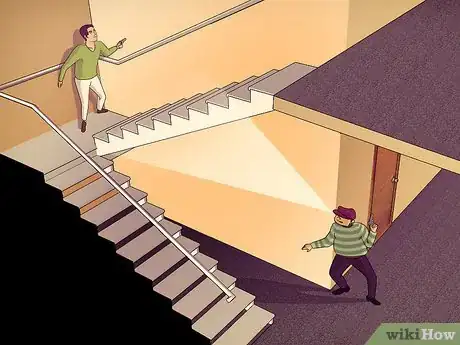
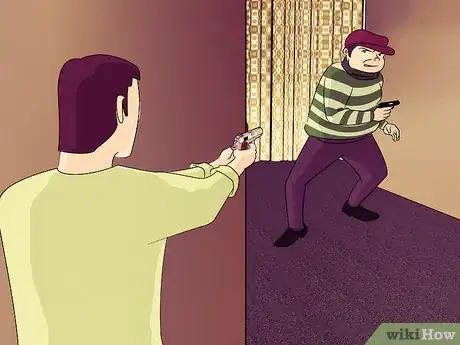
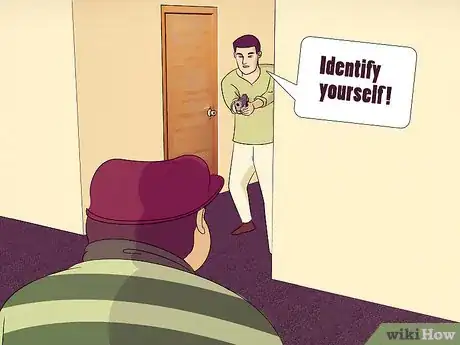
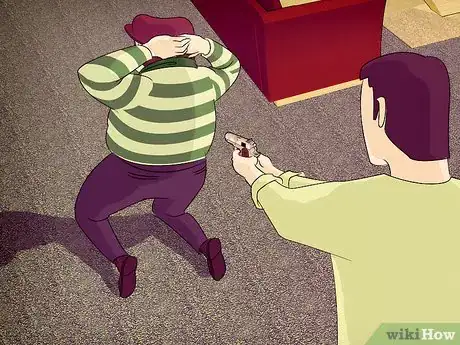



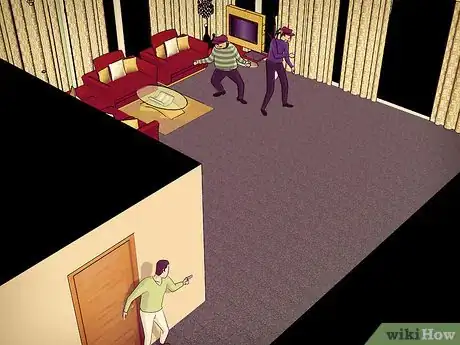
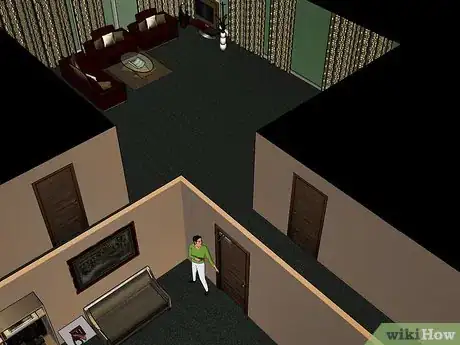

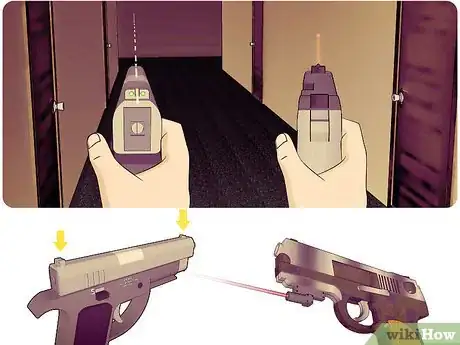
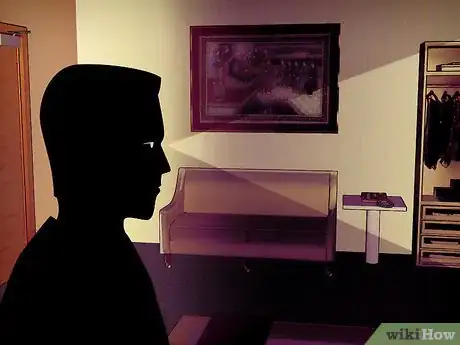








-Step-21-Version-3.webp)




